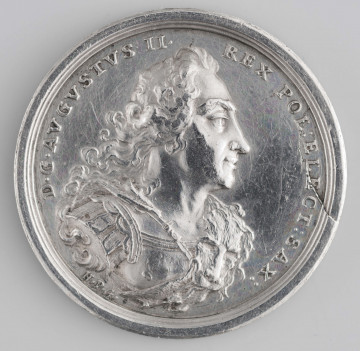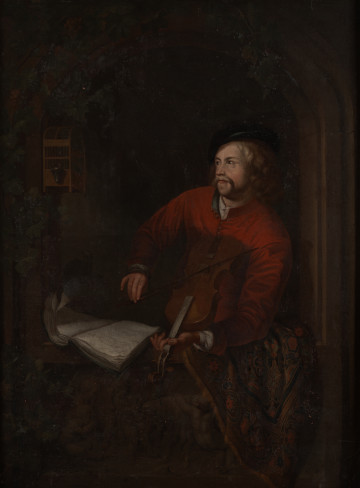Atarah
ante 1939
Museum of the history of Polish Jews
Atara (Hebrew: finial) is a wide lace or embroidered belt that adorns the upper edge of a tallit - a prayer shawl (https://sztetl.org.pl/pl/slownik/tales). Apart from the decorative function, the atara fulfilled a purely practical function, supporting the tallit on the shoulders. There are also ideas according to which the habit of sewing on the atar has biblical roots, resulting from the commandment: "Let them make tassels at the edge of their robes ... when you look at them, remember all the commandments of the Lord to fulfil them" (Numbers 15:38). -39).
The most characteristic of the atar product was the technique of shichu, also known as "Spanish work" (Yiddish arbet spanier), consisting in making embroidery with a thread wrapped in a wire. Despite the name suggesting Sephardic origin (https://sztetl.org.pl/pl/slownik/Sefardyjczyki), the arbet technique developed in the 19th century among Jews living in Central and Eastern Europe.
The oldest preserved atars from Poland date back to the 18th century. In the 19th century, atars were produced mainly in Sasów (today Sasiv, in western Ukraine), the largest centre of scholarship at that time. Its origins date back to 1830 when Markus Lejb Margulies opened a workshop. The later developing industrial methods of production made the traditional Sasowo manufactories lose their importance, but the plants operated until the interwar period. You can read more about the fate of the Jewish community in Sasów on the Virtual Shtetl website: https://sztetl.org.pl/pl/miejscowosci/s/874-sasow/99-historia-spolecznosci/137985-historia-spolecznosci.
The presented atar collection was purchased at the end of the war or shortly after its end by Roman Szkaradek - collector, co-founder and first curator of the Museum of the Sądecki Region. He bought them from an old goods dealer, but their origin is unknown. Perhaps they come from one of the apartments deported to the extermination camps of Jews? For the next years, they were kept by the son of Roman Szkaradek, Stanisław Murzański.
In a letter of 26 April 2011, when he handed over the objects to the Museum of the History of Polish Jews, he wrote: "Both in primary school and in middle school, I had friends from Jewish families, many former German colonists in those parts, also with Hungarian, Slovak and Czech. But the Jews were the most numerous group. I had relations with some of them even at the beginning of the occupation, I even went to the ghetto (before it was closed), visiting Natan Einciger, with whom I was friends. Until one day I arrived, Nathan's mother said that he was taken somewhere to work and gave me his English language textbook (German was compulsory in junior high school). After the end of the war, a small group of Jews returned to Nowy Sącz, though for a short time. But none of my colleagues or acquaintances was among them. As memory of that tragic reality faded away, the objects that I had kept in order to be able to hand them over to the Museum of the History of Polish Jews only now, after so many years, began to take on the meaning of a symbol, a sign, a bond with that tragic reality [...] ".
Natalia Różańska, Maciej Wzorek

20th century
Castle Museum in Łańcut

1717 — 1737
National Museum in Lublin

19th (?) century
Castle Museum in Łańcut
DISCOVER this TOPIC
National Museum in Szczecin
DISCOVER this PATH
Educational path